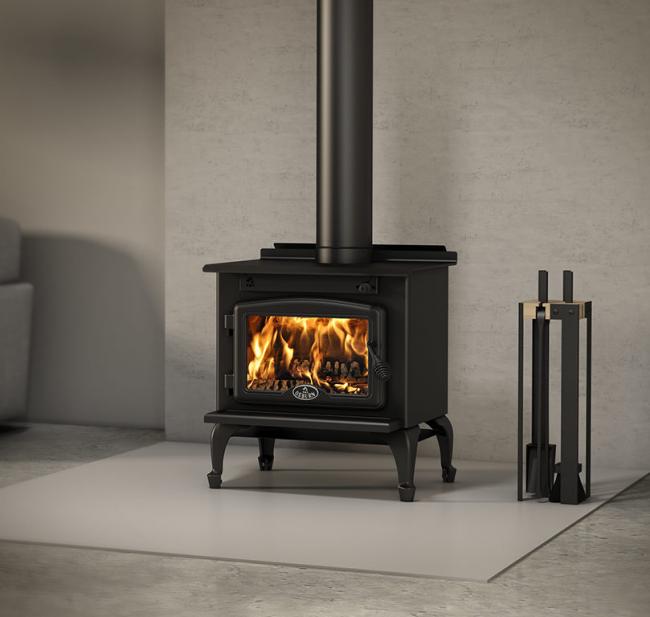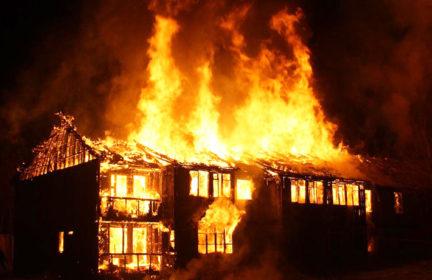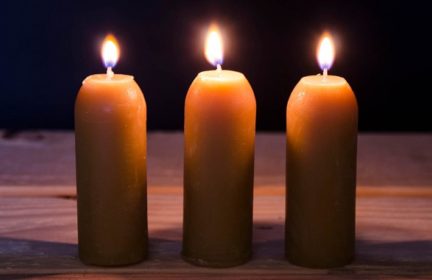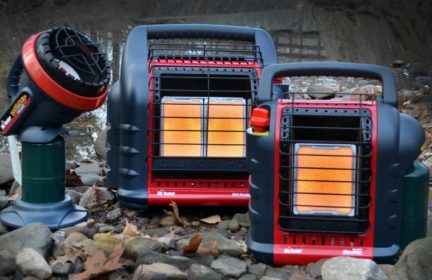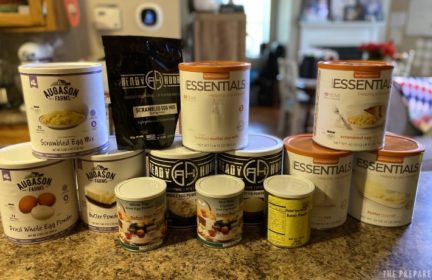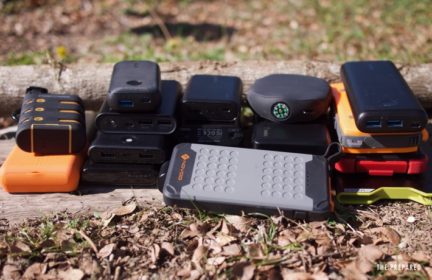Any options for cooking indoors when the power is down?
I’m helping a friend with some prepping stuff. She lives in a townhouse in an area which has often been affected by bad air from wildfires and where our local power company has also been shutting down the electricity for days at a time, in an attempt to prevent said wildfires (which they haven’t prevented anyway). One problem the friend has is cooking or heating food because she has an electric stove. I would recommend a small propane stove, but her area is really dry and last year the fire department pleaded with people to not create any sparks outside. I realize that these small butane stoves don’t produce much in the way of sparks, but she just really felt like she didn’t want to risk it.
So, I’m wondering what her options are for cooking or heating at least minimally, if she has to cook inside and rely on power from a backup solar generator or other rechargeable source of some sort. Regular hot plates and toaster ovens are massively expensive in terms of electrical use. What else can she do?
-
Comments (50)
-
hbic - June 28, 2020
Butane burners are used inside all over Asia — should still crack a window but doesn’t create the carbon monoxide dangers using propane inside does
-
hbic - June 28, 2020
Butane burners are used inside all over Asia — should still crack a window but doesn’t create the carbon monoxide dangers using propane inside does
-
John AdamaStaff - June 28, 2020
You can use gas-fueled camping stoves inside, provided you have your head on straight (eg. open a window, don’t overdo it, etc.) Many people have Jetboil-style stoves in their emergency supplies, so it could easily do double duty in those blackout situations.
-
Matt Black - August 24, 2020
Jet boil is probably going to be one of your best bets, if you have the budget for it. Otherwise, a simple camping stove would do the trick. Just try to plan in advance and have an appropriate supply of fuel.
Another option for cooking or warming would be chafing fuel. For example, https://www.amazon.com/Liquid-Safety-Cooking-12-Pack-Opener/dp/B078PYV3BX/
-
-
Sheilah - June 28, 2020
We got a rocket stove at Christmas, for just in case as we are not campers. It uses dried grasses, leaves, or twigs as fuel and gives off little to no smoke as it burns extremely efficiently due to its design. That might be adjusted for your friend’s needs.
-
Matt Black - August 24, 2020
👍
A hobo stove could probably also be used, but you’re going to have to take precautions (setting it atop a baking pan or something).
-
-
Mike A - June 28, 2020
I bought a Snow Peak Home and Camp burner that uses butane cartridges. The Snow Peak web site states that it is safe for home (indoor) use. It’s a bit pricey (~ $110) if purchased at MSRP but they have them at REI and I used one of my regular 20% coupons. REI also sells the butane cartridges. I haven’t used it yet so cannot comment on how well it works.
-
Jonnie PekelnyContributor - June 29, 2020
What do folks think about alcohol burners. Apparently safe to use indoors…
-
Uhlan - July 1, 2020
Alcohol has about half the energy content by weight as canister fuels or liquid white gas, so the flame would have to be on twice as long inside the house to get things cooked.
California and some other states have banned the sale of denatured alcohol, which only leaves the more expensive (due to taxes) Everclear 189 proof grain alcohol. But the fact that you can drink the Everclear while you’re cooking with it might be bonus for some.
-
-
Kris DzrContributor - July 14, 2020
I use my fireplace. Never tried it in summer, but we do it in winter just for fun.
-
Winston Smith - October 25, 2020
I agree. Our fireplace wouldn’t keep the house toasty warm in cold weather, but it would knock the chill off and provide a place to cook. Plus, there’s something calming about a fire.
-
Thomas GomezStaff - October 26, 2020
I love cooking in my wood stove. I have made pizza, grilled meat and made bread. I use an internal meat thermometer because food can cook really fast.
-
Paulino Martin - October 26, 2020
Is this the style of wood stove that you have? My wife and I are wanting to buy a house with a wood stove and I brought up the additional benefit of throwing the cast iron skillet on the top in the morning and grilling some eggs. She said that if I did that, it would scratch it and I wouldn’t be allowed to do that. Could you help settle our arguement? does putting a skillet on the top of a wood stove like this scratch it?
-
Thomas GomezStaff - October 26, 2020
Very similar! Mine is an insert, so it doesn’t have that top portion. To cook, I just throw in some fire bricks, make a fire, then move the coals around till the bricks are exposed. I will then put a cast iron skillet over the coals, using the bricks as a prop. If I want to get fancy, I will throw in some cherry wood and close the door for 30 seconds to smoke whatever I am cooking. I have also thrown in a bbq grate and cooked hot dogs. If I have a fire that has burned down, its actually faster to just cook in my stove vs firing up the grill.
You can make pizza on par with a fancy brick oven in a wood stove. I use a cast iron skillet instead of a pizza stone.
-
-
hikermor - July 16, 2020
Cartridge type backpacking stoves do not create sparks. They, and any other live flame do generate CO, so crack a window and shut the stove off before you go to bed…..
-
Jonnie PekelnyContributor - July 16, 2020
That does bring up the question — what if the air is bad outside and we’re supposed to keep the windows shut? This is how it usually happens these days in NorCal with wildfire season. Our power company proactively shuts off the electricity to prevent wildfires in windy conditions. The wildfires start anyway and are often catastrophic. The air gets bad to terrible throughout the whole region. We’re told to keep our windows shut and run an air purifier but of course there’s no power to do that. It’s not so bad in my immediate area, but one of my people lives farther north where she loses power for days and the air gets really bad. I’m trying to figure out solutions for her. So, it sounds like even with Sterno it’s not necessarily safe to cook if you can’t open a window. What about using it in the garage or something?
-
hikermor - July 16, 2020
If the air is really bad, you don’t want to be hanging out in your garage, either. Although with an N95 or N100 mask, it might be OK for a brief period.
The most fool proof course of action is to eat a no cook meal, which none of us normally do, but it can work. Consume that melting ice cream!
Another option would be a solar cooker, which will atl east warm food up. There are expensive models for sale, but some can be constructed by the average DIYer fairly easily.
I admit I have run a canister stove briefly for about three minutes (enough to heat up water for coffee)but on must be very careful.
-
Jonnie PekelnyContributor - July 17, 2020
I’m just wondering, why is this not a problem for gas? I mean, when cooking on a gas stove with windows closed under normal condition? Wouldn’t that also generate C02? And also wondering how it works when canned heat is used to keep food warm at social functions, etc. The windows are often also closed there. Why is that considered safe but cooking food at home using canned heat isn’t?
-
hikermor - July 17, 2020
Basically, anything generating flames is a potential problem. Here is a good reference on CO:https://en.wikipedia.org/wiki/Carbon_monoxide
A simple measure is to install CO detectors, often combined with fire/smoke detectors. A very simple procedure and well worth the time and money.
-
Jonnie PekelnyContributor - July 17, 2020
Yeah, okay, I get the reasons it’s a good idea/important to install CO detectors, but for practical purposes, people cook with gas all the time without opening the windows and without being too concerned that it will poison them. Is the situation with canned heat about the same level of danger? What about with cartridge camping stoves?
-
NoRobot - July 20, 2020
It’s no longer a settled fact that cooking with gas (natural gas, propane) indoors is entirely safe. https://www.vox.com/energy-and-environment/2020/5/7/21247602/gas-stove-cooking-indoor-air-pollution-health-risks But it won’t kill you, and neither a properly run butane or propane stove that is rated for indoor use, for example. There are other methods that use liquid or gel fuels (e.g. denatured alcohol) that might be safer because there’s no risk of a gas leak (just noxious fumes). But if we’re talking about occasional use, I think that any stove rated for indoor use would be fine.
-
hikermor - July 20, 2020
CO is an invisible, odorless gas that, at high enough concentrations, causes dizziness, headaches, fatigue, disorientation, and eventually death. (In the US, 27 states require CO monitors by law.) Though research has found that the presence of gas stoves in the home is one source of elevated risk of CO poisoning, that generally only happens when something goes wrong: a gas stove with a pilot light, a poorly ventilated space, a burner left on, something like that. Among average people, symptoms start at around 70 parts per million (ppm).
From the reference cited above. Be careful when you are cooking with gas, or anylive flame and be well ventilated. Don’t go to sleep with stove or ovens lit;that is one common way people get into trouble with CO.
-
Jonnie PekelnyContributor - July 20, 2020
Are camping stoves and such about the same level of danger as a conventional gas stove, or more dangerous as far as CO is concerned? What about canned heat?
-
hikermor - July 20, 2020
It depends upon the specific stove and its adjustment. Blue flames are not a good sign,generally speaking.
-
hikermor - July 20, 2020
The larger the volume of air in your enclosed space, the better….
-
Jonnie PekelnyContributor - July 20, 2020
But gas stoves have blue flames…
-
hikermor - July 20, 2020
So they do, and they generate CO. That is why kitchens have exhaust fans. Any time you are dealing with a live flame, there is a potential CO problem. People have died when they use the oven or stove top burners are space heaters.
Just be aware and cautious. That is why CO detectors are recommended.
-
Glassman - August 20, 2020
It is safe and I think people just want to be sure. I wouldn’t hesitate to use a propane or butane stove indoors at all. The Amish use kerosene lanterns all the time.
Glassman
-
Zabeth - August 21, 2020
Jonnie, what you said got me thinking. If the air quality is bad outdoors but your friend needs to bring more fresh air into her residence (or needs to remove Carbon dioxide or Carbon monoxide from the residence) but doesn’t have electrical power to run an air purifier, perhaps she could make a manually operated air pump, such as a “Kearny Air Pump” or a double-action piston pump, to be used along with large HEPA air filters, as described and depicted in the appendices to Cresson H. Kearny’s book: Nuclear War Survival Skills? You can download a free pdf-format copy of that book at: https://www.oism.org/nwss
Zabeth
-
Jonnie PekelnyContributor - August 22, 2020
Zabeth, it’s been mentioned already in another thread. It’s on my list!
-
Zabeth - August 22, 2020
Jonnie, that’s great! Those pumps look as though they might take a good deal of strength to operate though, unfortunately. So they might not be a good option for your friend after all 🙁
Zabeth
-
Jonnie PekelnyContributor - August 23, 2020
How much strength do they take and why? I don’t know anything about that.
-
Zabeth - August 24, 2020
Hi Jonnie,
I’m making the assumption (and of course, I could be wrong), that a Kearny Air Pump or a Double-Action Piston Pump would probably be difficult for a woman of average strength to operate for any significant length of time on her own, based on the figures in Kearny’s Book, Nuclear War Survival Skills, that depict the operation of those devices, particularly figures 14 and 24 in Appendix B, and figure 3 in Appendix E. The KAP and the Double-Action Piston Pump, as shown in the book, are apparently made primarily from wood and plywood and look (to me) to be rather heavy and cumbersome to set up and operate.
In Appendix B, Kearny says, in essence, that a large KAP can be operated by one man of average size and strength but that the operators usually prefer to work in pairs. In Appendix E, Kearny describes how two operators, a 69-year-old man and a 15-year-old boy pumped the Double-Action Piston Pump at a rate of 52 strokes per minute. Of the two devices, it looks (to my untrained eye) as though the Double-Action Piston Pump might take less upper body strength and stamina to operate, especially if the piston handle is positioned at the height of the operator’s elbow.
Zabeth
-
Jonnie PekelnyContributor - August 24, 2020
Not a very useful survival tool if 52% of the human race can’t operate it! Somebody needs to come up with something better then. Somebody who thinks outside the “man” box. Why would we even assume that a man would be around in these circumstances?
-
Zabeth - August 25, 2020
I know what you mean. Since Kearny suggested the KAP or a Double-Action Piston Pump for use in a fall-out shelter, I suppose he was assuming there would be at least a few men in the shelter who could operate one of those wooden pumps. It would be interesting, though, to see if a lighter weight KAP or Double-Action Piston Pump could be fabricated – possibly out of Aluminum or other relatively light weight metal? I’m guessing that might make them easier for a woman to operate on her own. Another possibility to get fresher, filtered air into an enclosed apartment or townhouse (or to remove “bad” air from it) might be to use a canister-type vacuum cleaner with a HEPA filter that could either suck air out of a room or, operating in reverse, could blow fresh air into the room. Some sort of battery set-up would be necessary, of course, to run it if the electrical power was off. Perhaps a battery bank charged by portable solar panels?
-
-
LBakes - August 19, 2020
This induction hot plate is getting rave reviews, and although it does use a fair amount of power, it’s a good option if you want to: a) avoid the health concerns that some poeple are mentioning, and b) if you pair it with a solar panel and battery, you don’t need to worry about ever running out of fuel. https://www.amazon.com/Duxtop-8100MC-Portable-Induction-Countertop/dp/B0045QEPYM/ref=as_li_ss_tl
-
Jonnie PekelnyContributor - August 20, 2020
1800W is a lot! You’d have to have some really high watt generator to use that, wouldn’t you? My newly acquired Bluetti could run that thing for half an hour if it were fully charged and then it would be done.
-
-
Zabeth - August 19, 2020
Another option might be a HERC oven that runs on tea light candles. However, you can’t leave them unattended and must be sure to trim the wicks before lighting the candles.
-
Supersonic - August 20, 2020
I never knew that was an option. Thanks for that. Have you had pretty good success with it?
-
Jonnie PekelnyContributor - August 20, 2020
Interesting. Does it work as a stove also (not an oven)? What is the advantage of tea candles over canned heat? And doens’t it present the same problem of open flame drawing oxygen and producing carbon dioxide as all the other indoor burners do?
-
Zabeth - August 20, 2020
Hi Supersonic, I don’t have a HERC oven of my own yet (they’re pricey!) but I have seen some good YouTube videos of preppers using them very successfully. Also, I’m in the process of making my own DIY version from a large, broken toaster oven based on some instructions I found online 🙂
-
Zabeth - August 20, 2020
Hi Jonnie, No, the HERC tea light oven doesn’t work as a stove, just as an oven. So you can, for example, bake items such as bread, or cakes, or muffins, or cookies in it, cook a casserole in a standard 9″ x 1 3″ pan in it , or cook something in a small dutch oven in it. However, you can’t sautee or grill or fry anything in it. My understanding is that the cost to run the HERC oven with basic tea lights is less expensive than trying to get the same amount of heat using “canned heat” products. Also, tea lights have essentially an unlimited shelf-life and are completely legal to store in bulk in a house or apartment. I suppose if you were using a HERC oven in a small room, you’d want to crack open a window for ventilation but, if you’re using it in a normal sized kitchen in the U.S. I don’t think that would be necessary. Of course, use your own best judgment 🙂
-
-
Mike Cohen - August 21, 2020
Look on line from the small single eyed butane stoves can use on her cook top, stoves are inexpensive, and so is the fuel, buy two for under $50.00.
-
Mike Hill - August 24, 2020
That’s a good option. And I haven’t noticed a shortage on them so far, have you? I do wonder if prices will go up, though…
-
-
Zabeth - September 2, 2020
If someone is using a butane stove (or other non-electric stove with a flame) to cook soups, stews, etc., indoors (or outdoors), they can usually significantly reduce the amount of fuel they need to do that cooking as well as significantly reduce the time the flame is burning and could be creating dangerous Carbon monoxide, by using a thermal a/k/a retained heat a/k/a hay box a/k/a Wonderbox a/k/a fireless cooker. Some of the commercial brands of those cookers are: Saratoga Jacks, Mr. D’s, Shuttle Chef, Hope SaC, Wonderbox, and Wonderbag. It is also possible to make your own DIY Hope SaC, Wonderbox, or Wonderbag using instructions and/or patterns available online. A good book about thermal cooking is “Let’s Make Sense of Thermal Cooking” by Cindy Miller. You can find her book on Amazon and on Cindy’s website: http://www.thermalcooking.net, where you can also purchase Hope SaCs, Hope SaC kits and patterns, and sign up for thermal cooking classes. You can also find videos about thermal cooking and the different types of thermal cookers on YouTube.
Zabeth
-
Dog lover - September 3, 2020
There are lots of good points brought up by the replies here. My main concern is with any flame there is a build up of co. mon. When a burner is running perfectly it burns more cleanly and efficiently but it still is lowering your air quality. I use a gas range and love it but only run it when the exhaust fan is on. Many people cook without a fan running though. There are studies that say the air quality in homes with gas appliances is near unhealthy levels. I take a lot of ‘studies’ with a grain of salt and think common sense goes a long way in life. So, wether a camping stove, stereo, propane, or whatever is used keep fresh air in mind. I believe cooking on a grill on the patio or balcony still is the best option. Charcoal would be more likely to create a spark on a windy day, but a propane grill is a pretty safe bet. Using the grill outside also dosent heat up the house in the summertime, a big plus here in the south.
-
Sorcer Gamble - October 28, 2020
You can buy a alcohol burning ‘stove’ for like 10 dollars online or even DIY one from an aluminum can. I bought several quarts of denatured alcohol (clean burning fuel) from walmart for like 6.99 each near the paint section. For power outages.
-
Prepper123 - October 30, 2020
The best option is definitely a solar generator. We had a 6 day power outage earlier this year and we were able to run the large fridge, run a small microwave, charge phones and laptop and have internet. We had power the entire 6 days!
Here is the system that I have: Solar Generator
If you just wanted an option to run the microwave and charge phones you could definitely get a smaller system. For indoor heating, Mr Heater Buddy is one of the best ways to go. Completely safe indoor propane heater. They’re only like $85 and you can find them on Amazon or at Walmart.
-
Sorcer Gamble - October 30, 2020
That doesn’t even look branded? Wonder how it would compare to something like an Inergy Kodiak.
-
-
Illini Warrior - November 18, 2020
ditto on the portable camp stoves – a regular “white gas” version – with the optional propane attachment and hose extension for the 20lb BBQ tanks >>> gives you the best overall versatility for off-grid cooking – indoors or outdoors – bug in or out ….
safe? millions and millions of natural gas stoves across the country >> just remember you’re using a portable unit that can be knocked around and moved eazy ….
doesn’t hurt to have a 12V muffin fan rigged into your existing stove hood for some cooking odor control …..
-
- News for the week of 2025-07-14 - 4 days ago
- News for the week of 2025-07-07 - 2 weeks ago
- Fun ways to teach kids outdoor/survival skills - 2 weeks ago
- News for the week of 2025-06-30 - 3 weeks ago
- News for the week of 2025-06-23 - 4 weeks ago
This forum is heavily moderated to keep things valuable to as many people as possible. Full community policies are here. The basics:
- 1. Be nice to each other.
- 2. Stay focused on prepping.
- 3. Avoid politics, religion, and other arguments.
- 4. No unfounded conspiracies, fake news, etc.
- 5. Debate ideas, not people.
